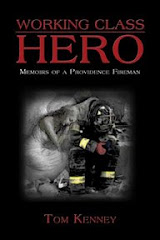Being vigilant is hard work, and it's a huge part of being a firefighter. You've always kept your eyes open for everyday occupational hazards. You know how to be careful and you've known for years. But sometimes it takes a little information to protect yourself.
Cancer may not seem like an occupational hazard that a firefighter needs to watch out for, but it certainly is. In older buildings and homes, builders used a natural mineral called asbestos. Asbestos is a fire-resistant mineral used in old dry wall and insulation, and was supposed to make a lot of homes and buildings safer for a lot of people. It can still be found in dry wall and in insulation in those older homes.
Today, when those homes are disturbed, for example, as you break down the walls of a burning building, asbestos fibers are released into the air. When inhaled, asbestos fibers may cause a deadly cancer to attack the lungs and you will begin to notice symptoms of mesothelioma.
These mesothelioma symptoms can include shortness of breath and chest heaviness. Sound familiar? They should. These symptoms are often confused with other more common, more treatable diseases. Even worse, mesothelioma symptoms are latent, often for up to 50 years. By then, the cancer has spread and treatment is either difficult or impossible.
The government has taken measures to protect heroes like firefighters, military veterans, and construction and demolition workers from asbestos exposure. Organizations like the AFL-CIO are rallying behind those who have already been exposed to asbestos and have developed mesothelioma. Though an act was passed to provide for victims, groups like AFL-CIO are fighting for more support.
So what can you do? Find out more about asbestos exposure and the dangers of mesothelioma, especially if you've been in the business of fighting fires for a while. Search the web; ask a doctor; visit a library. There are resources designed to provide us with what we need to know. With more information, you have a better chance of avoiding asbestos exposure.
You've always protected us. It's time for you to protect yourselves.
Matt Phillips
Subscribe to:
Post Comments (Atom)


No comments:
Post a Comment